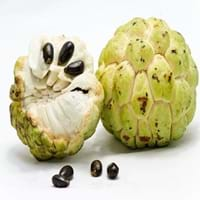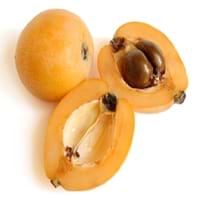Health Benefits
Cancer prevention, Heart care, Regulation of heart rate
Cancer prevention, Heart care, Reduces nervous tension, Reduces blood circulation problems, Reduces stress, Regulation of heart rate, Strengthening of bones
General Benefits
Anti oxidant properties, Anti-inflammatory properties, Boosts immune system, Controls blood pressure, Digestive aid, Strengthens bones
Anti-inflammatory properties, Controls blood pressure, Digestive aid, Eye care, Helps in weight loss, Improves eye vision, Maintains healthy cholesterol level, Strengthens bones
Skin Benefits
Reduces wrinkles, Skin rejuvenation
Anti-aging benefits, Reduces wrinkles, Treatment of dark spots, Treatment of skin diseases
Hair Benefits
Promotes longer and healthier hair, Treatment of dandruff, Treatment of Lice
Protects hair
Allergy Symptoms
Anaphylaxis, Itching, Skin rash, Swelling of face
Diarrhea, Itching of mouth, Nasal congestion, Sneezing, Swelling of face, Watery eyes
Side Effects
Allergic reaction, Possibly unsafe during pregnancy
Allergic reaction
Best Time to Eat
As a snack in the late afternoon, Don't consume at night and before bed, Morning time (before lunch)
Along with meal, As a snack in the late afternoon, Don't consume at night and before bed, Morning time (before lunch)
Vitamin A (Retinol)
Not Available
Vitamin B5 (Pantothenic Acid)
Not Available
Vitamin C (Ascorbic Acid)
Not Available
Vitamin E (Tocopherole)
Not Available
Lutein+Zeaxanthin
Not Available
Phytosterol
Not Available
Calories in Fresh Fruit with Peel
Not Available
Calories in Fresh Fruit without Peel
Not Available
Calories in Frozen Form
Not Available
Not Available
Calories in Dried Form
Not Available
Not Available
Calories in Canned Form
Not Available
Type
Tropical
Tree fruit, Tropical
Season
Autumn, Spring, Winter
Winter
Varieties
Andrews, Amarilla, Asca, Baste, Bays, Bayott, Behl, Canaria, Capucha, Deliciosa, Ecuador, El Bumpo, Guayacuyán, Jete, Juniana, Knight, Nata, Popocay, Sander, Smoothey, Tumba, Umbonada, Whaley and White Juliana
Ahdar, Ahmar, Asfar, Blush, Champagne, Early Red, Eulalia, Fire Ball, Golden Red, Golden Yellow, Oliver, Thales, Thames Pride, Victor and Wolfe
Color
Green, Yellow
Orange, Yellow
Inside Color
White
Orange
Soil Type
Sandy loam
Clay, Loam, Sand, Well-drained
Climatic Conditions
Warm
Warm to hot climate
Facts about
- Cherimoya is also called as custard apple or chirimoya.
- The word cherimoya came from the Quechua word,'chirimuya',which means 'cold seeds'.
- The cherimoya is called as 'the tree of ice cream'.
- Loquats are used in plum wine manufacturing.
- Dried leaves of loquat are used to make herbal tea.
- The seeds of loquat are slightly toxic & the symptoms of intoxication are nausea, vomiting & shortness of breath.
Other Countries
Argentina, Chile, Colombia, Egypt, Italy, Mexico, Peru, South Africa, United States of America
Brazil, Chile, China, Egypt, Israel, Italy, Morocco, Pakistan, Portugal, Spain, Turkey
Top Importer
United States of America
China
Botanical Name
Annona cherimola
Eriobotrya japonica
Synonym
Not Available
Crataegus bibas or Mespilus japonica or Photinia japonica
Subkingdom
Tracheobionta
Tracheobionta
Division
Magnoliophyta
Magnoliophyta
Class
Magnoliopsida
Magnoliopsida
Subclass
Magnollidae
Rosidae
Order
Magnoliales
Rosales
Family
Annonaceae
Rosaceae
Species
A. cherimola
E. japonica
Generic Group
Not Available
Rose
Compare Cherimoya and Loquat
It is important compare Cherimoya and Loquat as both the fruits have a different nutritional value. Their comparison can be done on the basis of their vitamin and mineral content, calories, benefits as well as characteristics, making it easier for us to choose the best fruit for our diet. Their general health benefits are as follows:
Cherimoya Benefits: anti oxidant properties, anti-inflammatory properties, boosts immune system, controls blood pressure, digestive aid and strengthens bones.
Loquat Benefits: anti-inflammatory properties, controls blood pressure, digestive aid, eye care, helps in weight loss, improves eye vision, maintains healthy cholesterol level and strengthens bones.
Fruits are also used as a remedy for various hair problems. The hair benefits of Cherimoya are: promotes longer and healthier hair, treatment of dandruff and treatment of lice and hair benefits of Loquat are: protects hair. Some fruits are known to cause allergic reactions. The allergy symptoms of first fruit are: anaphylaxis, itching, skin rash and swelling of face and the symptoms of second fruit are: diarrhea, itching of mouth, nasal congestion, sneezing, swelling of face and watery eyes. Get sorted Cherimoya vs Loquat comparison with the help of fruit comparison tool by fruitvs.com.









